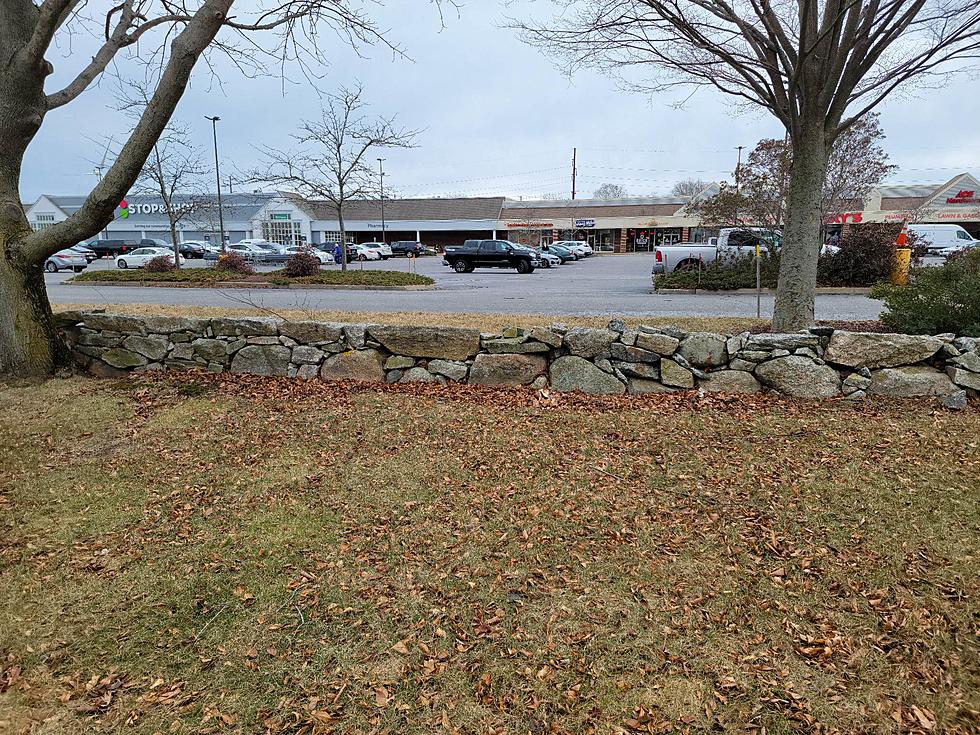
Remnants of Fairhaven’s Last ‘Poor Farm’ Can Still Be Seen on Route 6
If you’ve ever taken a look out your car window as you’ve driven past the Stop & Shop in Fairhaven, you may have caught a glimpse of an aging stone wall around the plaza.
Or, more likely, you may have never even noticed it at all, even while looking directly at it.
That unassuming wall may appear to be just part of the design of the plaza, but it actually goes back much further than that, to when the site was home of the Fairhaven Almshouse.
An almshouse – more colloquially known as a “poor farm” – was a communal structure, a place for the destitute, the sick and the elderly to live and be cared for when they could not take care of themselves, and had no one else to take care of them.
“Just about every town and city around here had their own version of a poor farm,” said Dave Depres, who spent 30 years, mostly as chairman, on the Fairhaven Historical Commission. “People would live there that didn’t have support. There was no social security back then, so they’d go (to the almshouse) if they had no family, they’d live there, and if they were able, they’d work the surrounding farm.”
They were built and managed by the towns themselves, and many SouthCoast towns had their own almshouses.
New Bedford’s “poor farm” was located at Clark’s Point; Westport’s “poor farm” is now a recreational area. Many others have been lost to time.

The original Fairhaven “poor farm” was located in North Fairhaven, on what is now Howland Road, sandwiched between Main Street and the Acushnet River. The land was purchased in 1824, and it remained there until the later part of the 19th century, when it was moved in part because people would sneak across the river at night and steal the vegetables from the farm.
According to a Standard-Times article from 2012 by Myra A. Lopes, that led to Henry Huttleston Rogers paying for a new almshouse to be constructed on Washington Street at the intersection of Sconticut Neck Road in 1894, with the intention to move it inland and make it harder for anyone to steal the crops.
Rogers commissioned Charles Brigham to build the structure, a 22-room Georgian Revival, according to Lopes.
“Mr. Brigham's design of the Almshouse was exhibited at the World's Fair in Paris and won a bronze medal. It was described as a gracious and welcoming structure,” she wrote.
As time wore on and with the advent of Social Security in 1937, fewer and fewer people needed to live on the “poor farm.”
In March 1960, the town voted to close down what had been the “poor farm” and the beautiful building was torn down and the land sold off. It became a bowling alley, at first called Atlantic Ten Pin Lanes and later renamed Bowlers’ Country Club, and it remained so until the property was sold in 1998.
Throughout the new millennium, Stop & Shop has been the anchor of a plaza that has seen other stores and restaurants come and go over the past couple of decades.
Yet the stone wall from the almshouse bequeathed to the town from H.H. Rogers still stands, a testament to a time when those with nowhere to turn could always turn to the poor farm.
“When they landscaped and built Stop & Shop, they did save quite a bit of it,” Despres said.
Wouldn’t it be nice if there were still poor farms today, a place where the homeless or those on the verge of becoming so could live and work and have a sustainable lifestyle? Nowadays, someone might call that socialism. Back in the old days, we called it just taking care of one another.
See Inside the Boyhood Home of Fairhaven's Legendary Henry Huttleston Rogers
Fairhaven's Historic Henry Huttleston Rogers' Potting Shed for Sale
Hilarious Google Reviews of the New Bedford-Fairhaven Bridge
More From WFHN-FM/FUN 107









